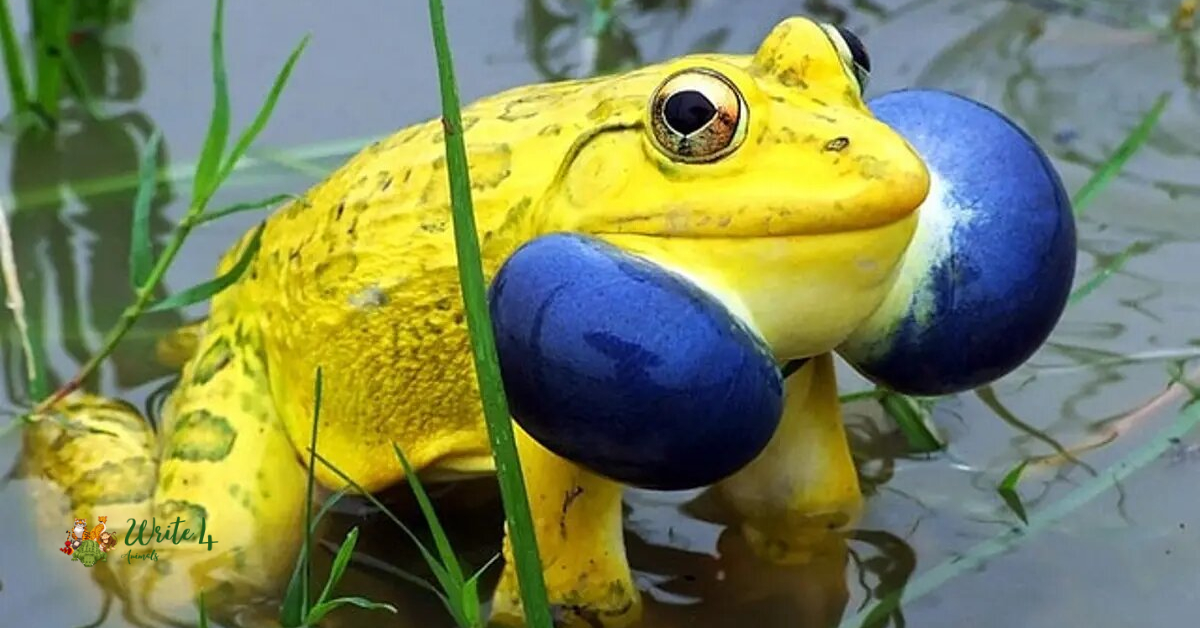Lakes, with their tranquil waters and picturesque surroundings, serve as enchanting habitats for a myriad of fascinating creatures. Beneath the glistening surface, an entire ecosystem comes to life, showcasing the remarkable diversity of animals that have adapted to the unique challenges of lake environments.
In this exploration, we dive into the depths to uncover 15 captivating animals that live in a lakes, each playing a vital role in the intricate tapestry of aquatic life.
Top 15 Animals that live in a lakes
1. Common Loon
The Common Loon, a striking symbol of northern lakes, is an enchanting bird known for its haunting calls that resonate across the water. These sleek, black-and-white birds are superb divers, gracefully navigating the depths in search of fish. With their distinctive red eyes and distinctive markings, Common Loons contribute to the picturesque ambiance of lakeshores.

During breeding season, their haunting calls echo through the stillness of dawn and dusk, creating a captivating soundtrack to the lakeside experience. Adapting to both freshwater and brackish lakes, these birds are not just inhabitants; they are integral to the essence of lakes, embodying the untamed beauty of these aquatic ecosystems.
2. Mallard Duck
Mallard Ducks, with their vibrant plumage and quacking calls, are quintessential inhabitants of lakes across the globe. These adaptable waterfowl are equally at ease on small ponds and expansive lakeshores. Mallards are known for their distinctively colorful markings, with males sporting iridescent green heads and females featuring more subdued brown tones.
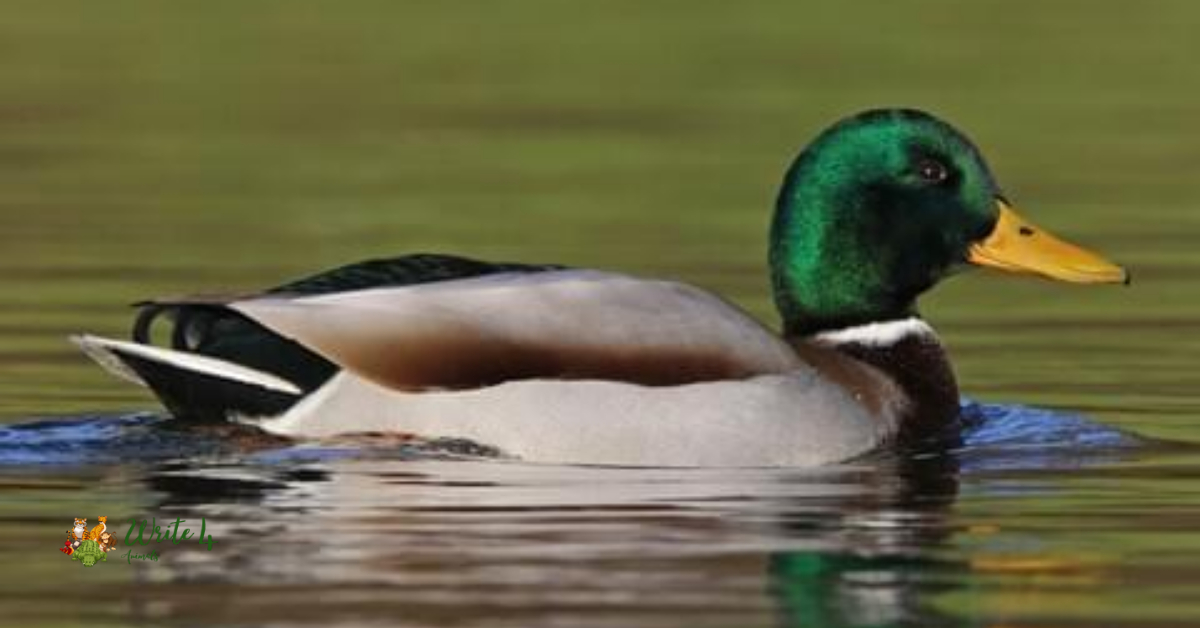
Their dabbling behavior, where they upend to feed on aquatic vegetation, adds a charming spectacle to lakeside scenes. Mallard Ducks are not merely visitors; they are active participants in the intricate dance of life that unfolds in and around lakes, contributing to the dynamic ecosystems that make these water bodies so captivating.
3. Great Blue Heron
The Great Blue Heron, a majestic and statuesque figure, graces lakeshores with its elegant presence. With its long legs, graceful neck, and distinctive blue-gray plumage, this heron is a masterful hunter along the water’s edge.
Lakes provide an ideal habitat for these wading birds, offering an abundance of fish and other aquatic prey. Great Blue Herons are patient and methodical, standing motionless for extended periods before striking with remarkable precision.
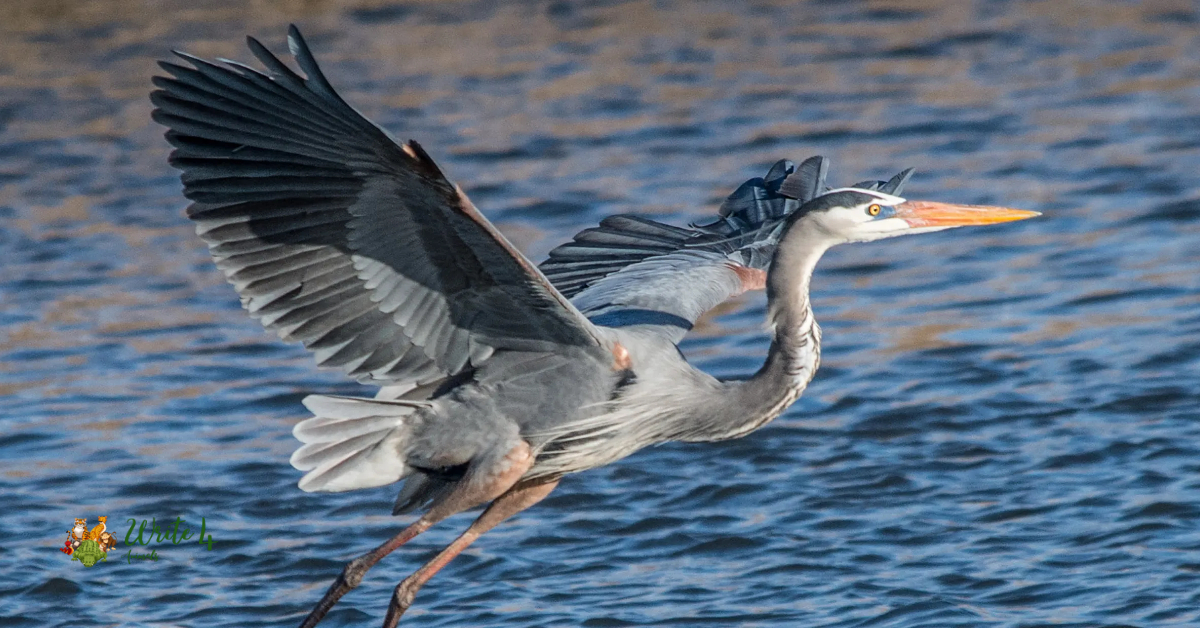
Their silhouette against the lake’s horizon is a familiar and awe-inspiring sight for those who frequent these aquatic landscapes. As apex predators, Great Blue Herons play a vital role in maintaining the ecological balance of lakes, embodying the harmonious coexistence of wildlife in these serene environments.
4. Northern Pike
The Northern Pike, a formidable predator, reigns as an apex carnivore in the underwater realms of lakes. Known for its streamlined body and voracious appetite, this fish species dominates the food chain, preying on smaller fish and maintaining the delicate balance of the lake ecosystem.
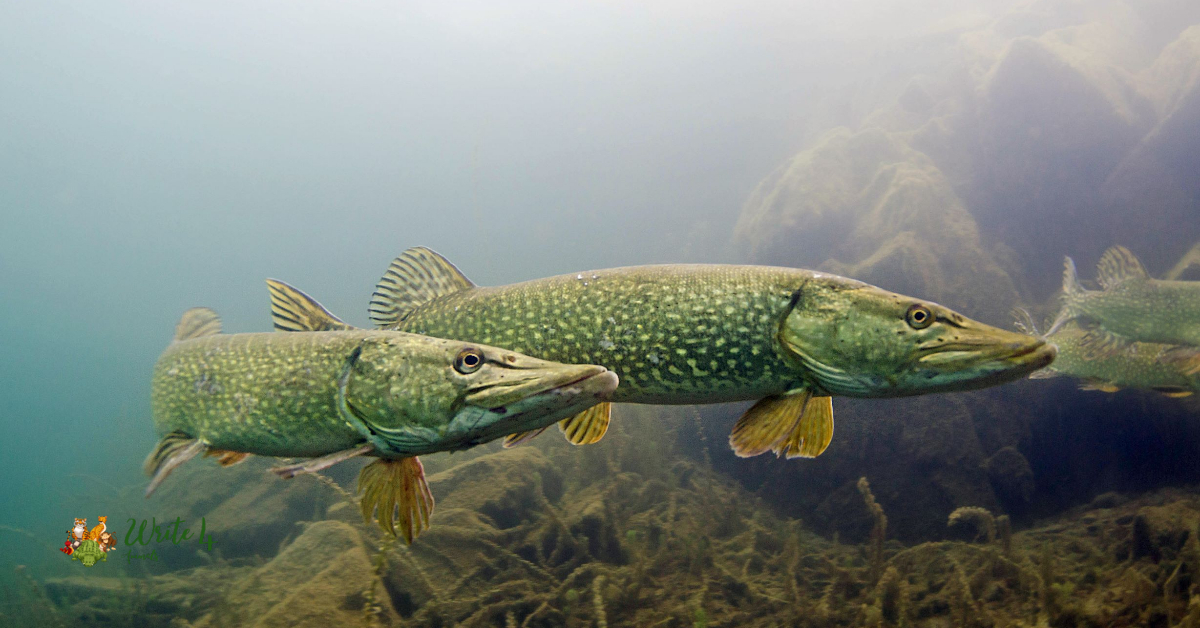
Northern Pike, with their sleek, torpedo-shaped bodies and distinctive markings, are a sought-after catch for anglers, showcasing both their sporting challenge and ecological significance.
Lakes provide the ideal habitat for these predatory fish, offering ample hiding spots and abundant prey, turning the underwater world into a dynamic theater of life where Northern Pike rule as kings.
5. Bullfrog
The Bullfrog, with its deep resonating croak, stands as amphibian royalty by the lakeside, adding a distinct charm to these aquatic environments. Recognized by its robust size and distinctive calls, the Bullfrog is a prominent member of lakeside ecosystems, often seen basking on the water’s edge or making strategic leaps into the shallows to catch prey.

These amphibians play a crucial role in controlling insect populations, contributing to the overall health of the lake ecosystem. Lakeshores echo with the symphony of Bullfrog calls during breeding season, making them a quintessential part of the auditory experience associated with lakeside habitats..
6. Painted Turtle
The Painted Turtle, with its intricately patterned shell and gentle demeanor, is a living masterpiece that finds its home in lakes across various regions. These reptiles are well-adapted to freshwater environments, basking on logs and rocks along the lakeshores.
Their distinctive red markings on the plastron and vibrant patterns on the carapace add to the visual allure of lakeside landscapes.

Painted Turtles contribute to the ecological balance of lakes by foraging on aquatic plants, small invertebrates, and even carrion. As sun-worshippers, they are often seen soaking up the warmth on sunny days, becoming an integral part of the scenic beauty that unfolds in and around lakes.
7. Largemouth Bass
The Largemouth Bass, a prized catch for anglers and a formidable aquatic predator, dominates the serene waters of lakes. Recognized by its distinctive large mouth and robust body, this species thrives in a variety of lake ecosystems, from small ponds to expansive reservoirs.
Largemouth Bass are renowned for their voracious appetites, preying on smaller fish and creating a dynamic ecological balance within the lake.
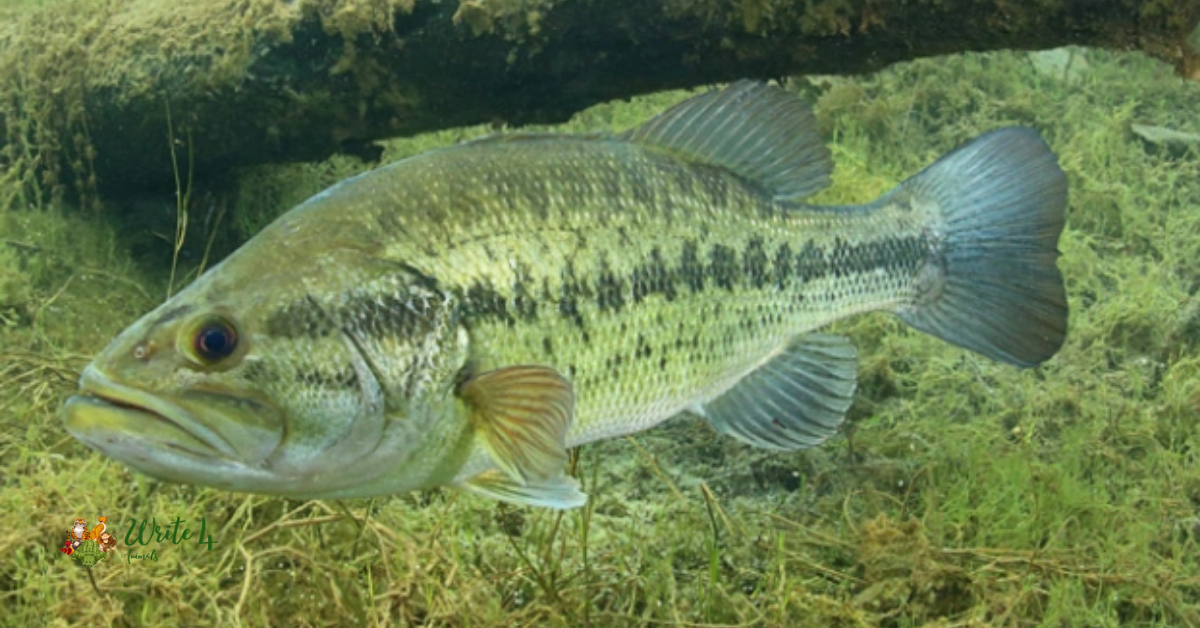
Anglers are drawn to the challenge of catching these powerful fish, contributing to the popularity of bass fishing as a recreational activity. Lakes, with their diverse underwater landscapes, provide an ideal habitat for Largemouth Bass, showcasing the intricate relationship between predator and prey in these freshwater ecosystems.
8. Muskrat
Muskrats, with their industrious nature, are charming inhabitants of lakeshores, creating a distinct presence along the water’s edge. These semi-aquatic rodents build intricate lodges and burrows, contributing to the shaping of the lakeside landscape. Muskrats are skilled swimmers and foragers, feeding on aquatic vegetation, roots, and small invertebrates.
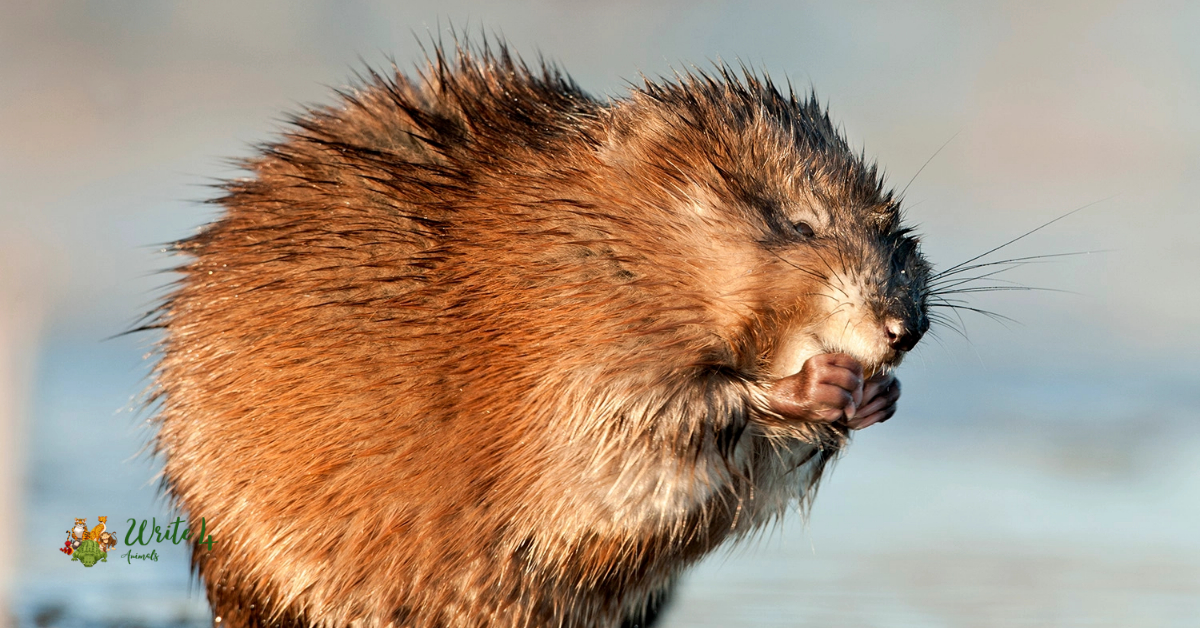
Their activities play a crucial role in maintaining the health of lake ecosystems by influencing vegetation growth and nutrient cycling. Lakes, with their abundance of aquatic resources, provide an ideal environment for muskrats to thrive, showcasing the intricate interplay between these industrious creatures and their watery surroundings.
9. Dragonfly
Dragonflies, with their iridescent wings and agile flight, are aerial marvels that dance above the serene lakeshores. These fascinating insects are integral to the intricate ecosystems surrounding lakes, contributing to pest control and pollination.
Dragonflies are skilled hunters, preying on mosquitoes and other flying insects, helping to keep the insect population in check and adding to the overall balance of the lakeside environment.
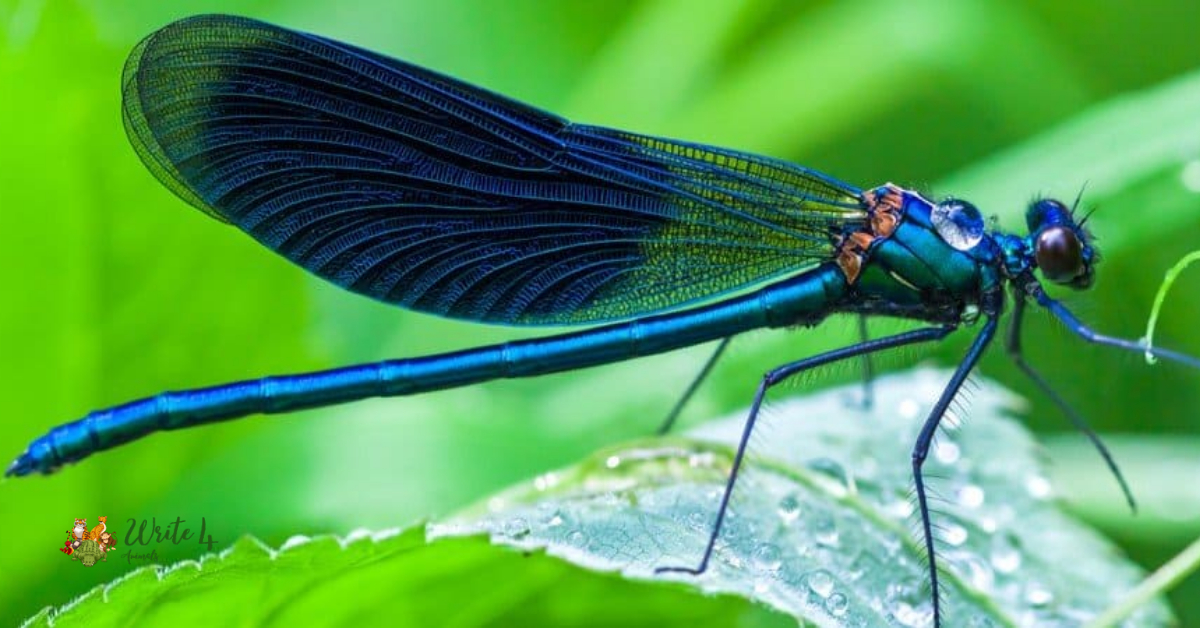
10. Water Snake
The Water Snake, a slithering resident of lakeshores, embodies aquatic elegance in its sinuous movements through the shallows. These non-venomous serpents are adept swimmers, gliding through the water with grace. Lakes provide an ideal habitat for Water Snakes, offering a diverse range of prey and ample hiding spots along the shoreline.
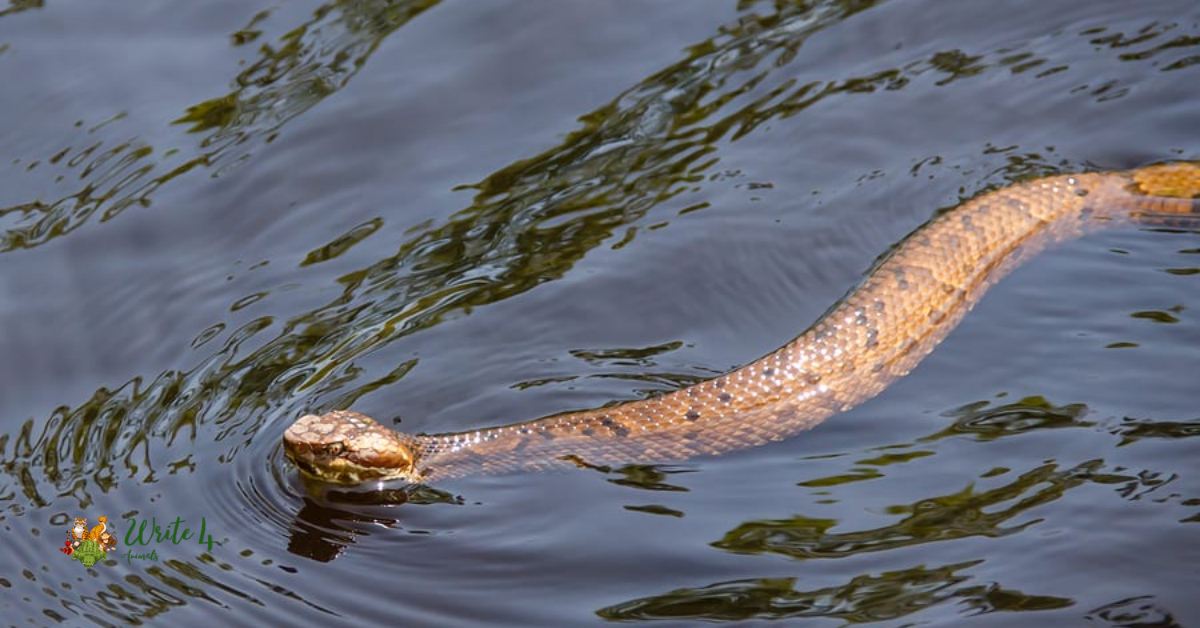
Often mistaken for their venomous counterparts, Water Snakes play a vital role in controlling the populations of amphibians and small fish, contributing to the ecological balance of lake ecosystems. Their presence adds a layer of intrigue to the underwater world, showcasing the adaptability and resilience of these creatures in the dynamic environments of lakes.
11. Herons
Herons, with their long legs and graceful stature, stand as stately sentinels along the lakeshores, adding a touch of majesty to the water’s edge. Whether patiently waiting for a fish to pass or soaring above the lake in search of prey, herons are masterful hunters. Lakes provide an abundant source of fish and other aquatic prey, making them ideal habitats for these iconic birds.

With their distinctive plumage and impressive wingspans, herons contribute to the visual allure of lakeside landscapes. Their presence signifies the delicate balance of nature, where these avian hunters coexist with the other inhabitants of the lake, creating a harmonious tapestry of life.
12. Flamingos
In certain regions, lakes become paradises adorned with splashes of pink as Flamingos gracefully wade through the shallow waters. These iconic birds, known for their vibrant plumage and distinctive bills, are a spectacle of elegance against the tranquil backdrop of lakes.
Flamingos thrive in saline or alkaline lakes where their specialized bills enable them to filter feed on microscopic algae and invertebrates. Lakes, with their unique chemical compositions and diverse ecosystems, offer the perfect conditions for large flocks of Flamingos to gather.
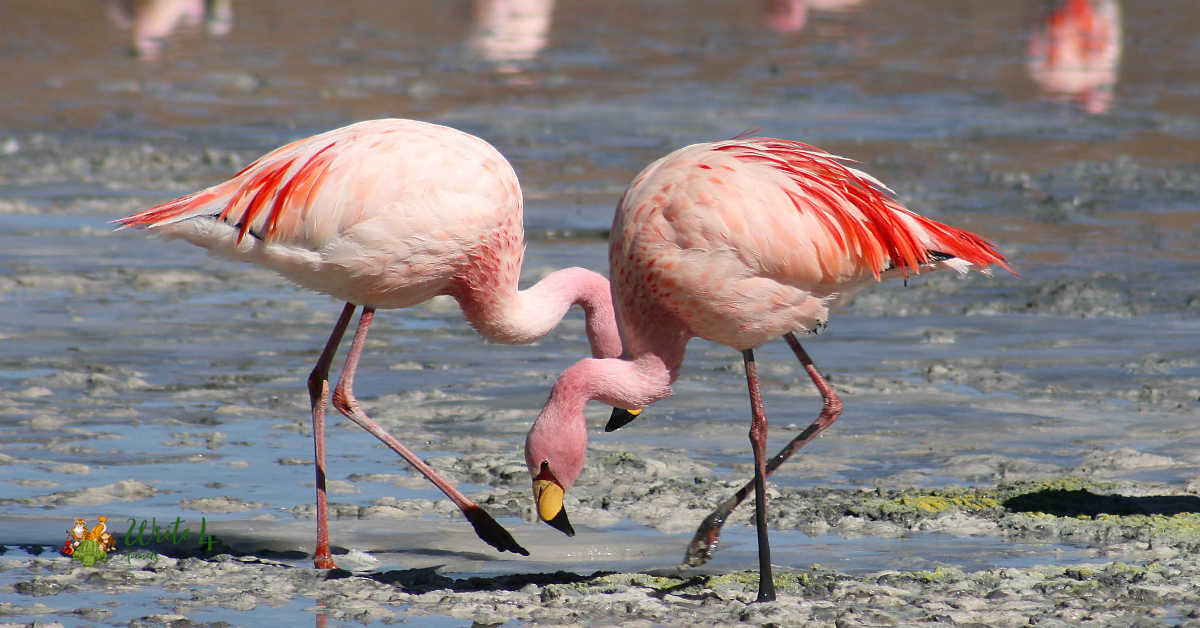
Their presence transforms lakes into vibrant scenes of color and activity, underscoring the resilience of life in diverse habitats. Flamingos thus become living symbols of the interconnectedness between these avian wonders and the lakes they call home.
13. Alligators
Alligators, formidable and stealthy, reign as apex predators in the lakes they call home. Lakeshores become the domain of these ancient reptiles, known for their powerful jaws and armored bodies. Alligators are well-adapted to freshwater environments, utilizing lakes for hunting and basking. Their patient and strategic approach to prey make them top-tier predators, maintaining the ecological balance of the lake ecosystem.
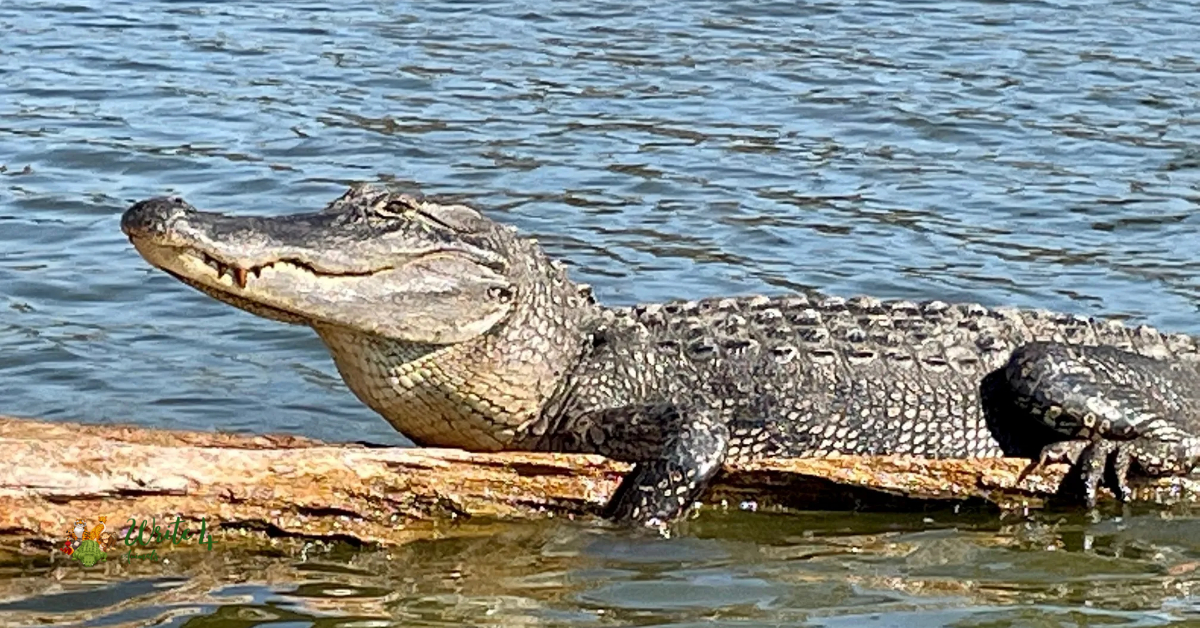
Lakes provide the ideal habitat for alligators, offering a mix of submerged areas for ambush and open water for basking. Coexisting with other aquatic life, alligators represent a testament to the wild and untamed nature of lakes, where the ancient reptilian presence adds a sense of awe and respect to these watery landscapes.
14. Frogs
Frogs, the conductors of the lakeside symphony, add a cacophony of croaks and ribbits to the vibrant chorus of lakeside life. These amphibians are prolific inhabitants of lakeshores, utilizing the water for breeding and the surrounding vegetation for shelter. Lakes provide a rich tapestry of habitats for different frog species, from bullfrogs with their deep calls to tree frogs with their melodic trills.
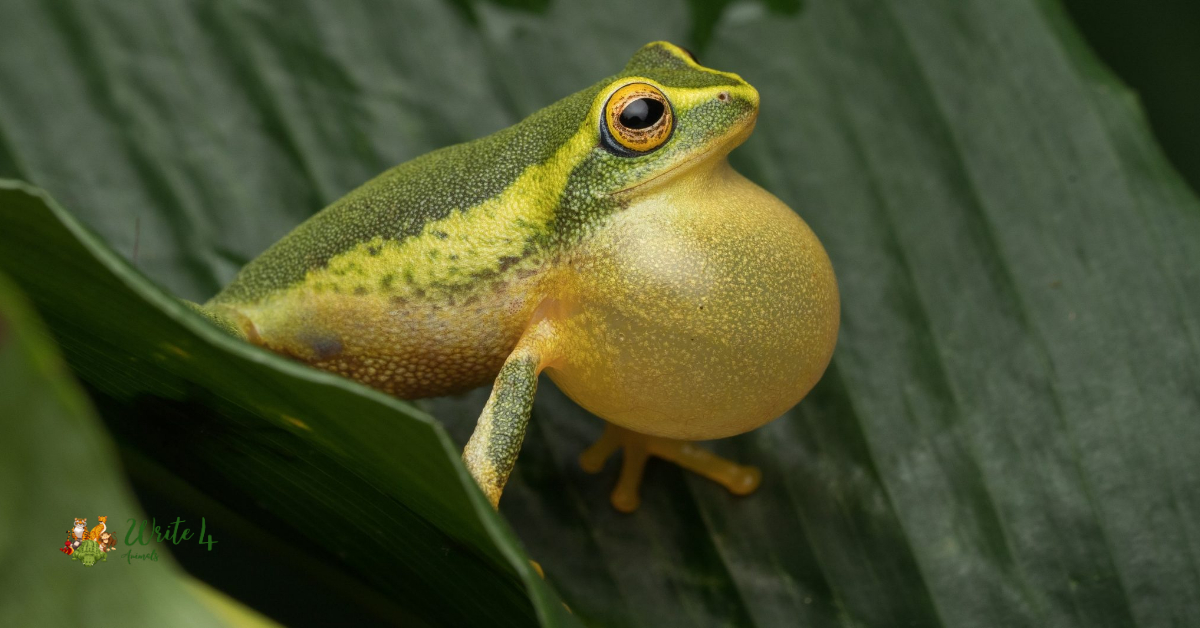
The chorus of frogs is not just a whimsical soundtrack; it plays a vital role in controlling insect populations, contributing to the ecological harmony of lakes. As versatile and adaptable creatures, frogs embody the dynamic nature of lake ecosystems, transitioning seamlessly between aquatic and terrestrial realms.
15. Ducks
Ducks, with their aquatic elegance and vibrant plumage, are enchanting residents of lakes across the world. These waterfowl navigate the tranquil waters, dabbling for food and creating picturesque scenes against the lake’s backdrop. Lakes provide an ideal environment for ducks, offering a diverse range of aquatic vegetation and invertebrates for them to feed on.

What do animals that live in lakes eat?
Animals residing in lakes exhibit diverse dietary preferences, reflecting the rich biodiversity of these aquatic ecosystems. Fish species such as bass and pike are carnivores, feasting on smaller fish, insects, and even small mammals. Amphibians like frogs are opportunistic predators, consuming insects and invertebrates.
Waterfowl such as ducks have a varied diet, including aquatic plants, small fish, and insects. Reptiles like turtles are herbivores, munching on aquatic vegetation, while some species of snakes are carnivorous, preying on fish and amphibians. Each species has adapted to its niche, contributing to the intricate food web within the lake environment.
What kinds of animals live in lakes?
Lakes harbor a diverse array of animal life, creating dynamic ecosystems. Fish species like Largemouth Bass, Northern Pike, and various types of perch are common residents. Amphibians, including frogs and newts, thrive in the shallow waters. Reptiles like painted turtles and water snakes can be found basking along the shores.
Waterfowl such as ducks, herons, and occasionally flamingos grace the surface, while mammals like beavers and muskrats build their homes along the shoreline. Insects like dragonflies and water bugs complete the intricate web of life in and around lakes.
How do human activities impact animals in lakes?
Human activities can have both direct and indirect impacts on the animals living in lakes:
Habitat Destruction: Urbanization, agriculture, and infrastructure development can lead to the destruction and fragmentation of natural habitats, affecting the availability of suitable living spaces for lake-dwelling animals.
Pollution: Runoff from urban areas, agricultural fields, and industrial sites can introduce pollutants such as chemicals, nutrients, and heavy metals into lakes, negatively affecting water quality and the health of aquatic organisms.
Overfishing: Unsustainable fishing practices can deplete fish populations, disrupting the balance of the food web and affecting the animals that rely on fish as a primary food source.
Introduction of Invasive Species: Human activities, intentionally or unintentionally, can introduce non-native species to lakes, leading to competition for resources and sometimes resulting in the decline of native species.
Climate Change: Human-induced climate change can alter water temperatures, precipitation patterns, and overall lake ecosystems, impacting the behavior, distribution, and reproduction of the animals that inhabit these environments.
Recreational Disturbance: Boating, fishing, and other recreational activities can disturb nesting sites, feeding areas, and breeding behaviors of lakeside animals, causing stress and potential population declines.
Frequently Asked Questions
[sc_fs_multi_faq headline-0=”h4″ question-0=”Are there dangerous animals in lakes?” answer-0=”While most animals in lakes pose no threat to humans, some may be potentially dangerous. In certain regions, lakes may be home to alligators or venomous snakes. It’s essential to be aware of local wildlife and follow safety guidelines when in or near lakes.” image-0=”” headline-1=”h4″ question-1=”What role do animals play in lake ecosystems?” answer-1=”Animals in lake ecosystems contribute to the balance of the food chain. Predatory fish help control smaller fish populations, while amphibians and reptiles may regulate insect populations. Birds that inhabit lakeshores contribute to nutrient cycling, and beavers and muskrats can influence vegetation growth.” image-1=”” headline-2=”h4″ question-2=”How do animals adapt to life in lakes?” answer-2=”Animals in lakes have evolved various adaptations to thrive in aquatic environments. Fish, for example, have streamlined bodies and fins for efficient swimming, while amphibians often have webbed feet for both land and water mobility. Birds may have specialized bills for fishing, and reptiles like turtles have shells for protection.” image-2=”” headline-3=”h4″ question-3=”Can animals in lakes be harmful to the environment?” answer-3=”While animals play crucial roles in lake ecosystems, certain factors such as overpopulation or the introduction of invasive species can have detrimental effects. For instance, invasive fish species may outcompete native species, upsetting the ecological balance. Conservation efforts are essential to mitigate potential harm.” image-3=”” headline-4=”h4″ question-4=”Are there migratory animals in lakes?” answer-4=”Yes, many animals that live in or around lakes are migratory. Waterfowl like ducks and geese often migrate seasonally, while some fish species undertake extensive migrations for breeding purposes. These movements contribute to the dynamic nature of lake ecosystems.” image-4=”” headline-5=”h4″ question-5=”Can I feed wild animals in or around lakes?” answer-5=”It’s generally discouraged to feed wild animals. While it may seem harmless, feeding can disrupt natural behaviors, lead to overpopulation, and encourage dependency on human-provided food. Additionally, certain foods may be harmful to the health of the animals.” image-5=”” headline-6=”h4″ question-6=”How can I contribute to the conservation of animals in lakes?” answer-6=”Individuals can contribute to conservation efforts by respecting wildlife habitats, avoiding littering, participating in local cleanup initiatives, and supporting organizations dedicated to preserving lake ecosystems. Responsible outdoor recreation and education about local wildlife are also essential components of conservation.” image-6=”” count=”7″ html=”true” css_class=””]
Also Read
1. Top 12 Humble Animals in the World
2. Top 10 Animals with the Lowest IQ
